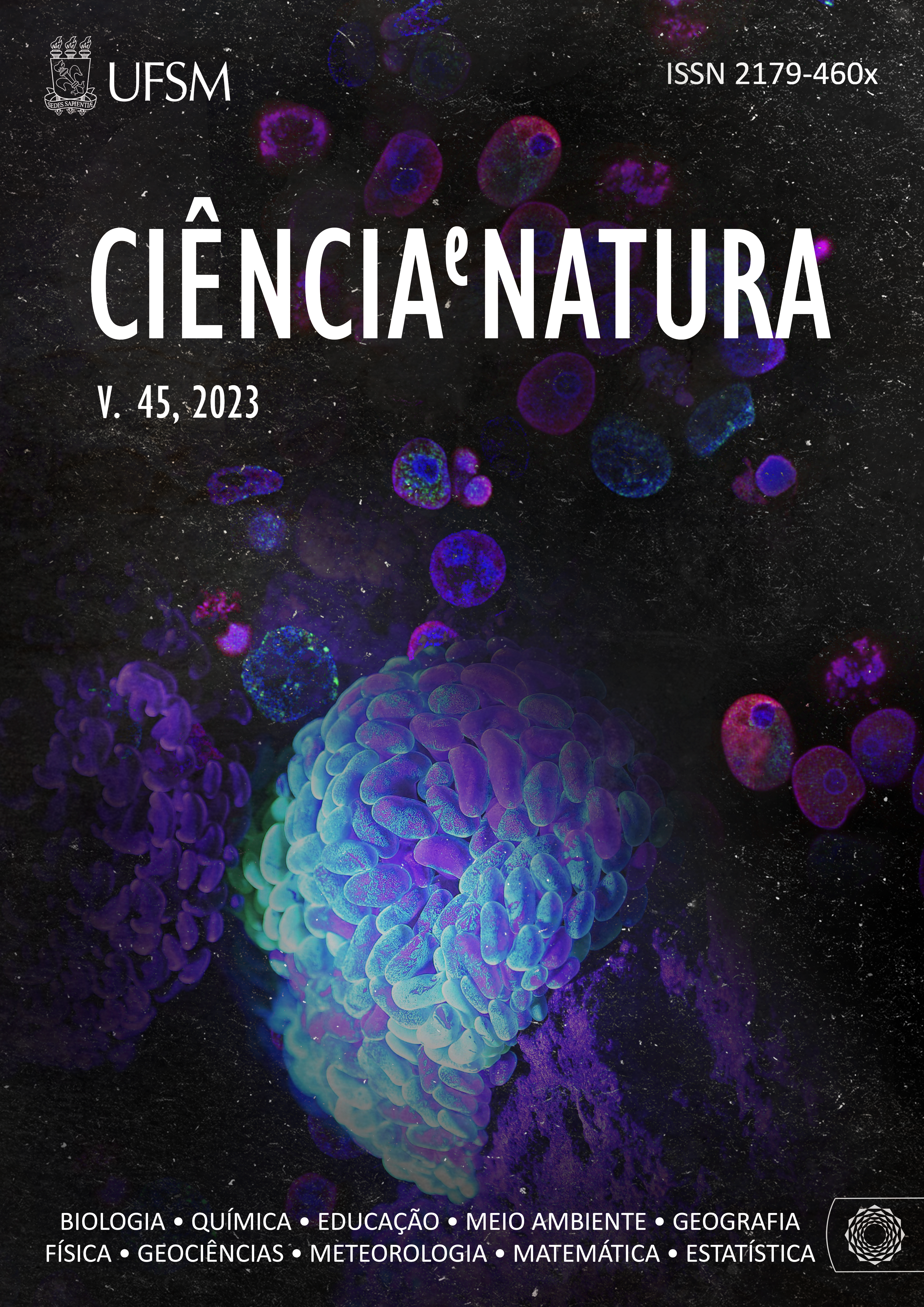Trincas Pitagóricas: uma abordagem para auxiliar o ensino de Matemática
DOI:
https://doi.org/10.5902/2179460X68025Palavras-chave:
Trincas Pitagóricas, Teorema de Pitágoras, Números primosResumo
O presente trabalho é fruto da exploração de metodologias de ensino que visam uma maior interação do aluno com o conceito abordado. Durante o texto apresentamos métodos de se obter as famosas trincas Pitagóricas a partir de conceitos de teoria dos números e álgebra. Nossa proposta consiste em fornecer ao professor (leitor) ferramentas matemáticas teóricas com as quais ele possa melhor desenvolver sua prática em diversos conteúdos de matemática. A busca por novas trincas Pitagóricas sempre foram alvo de fascínio e do estudo, tanto de matemáticos profissionais como de estudantes curiosos, sendo assim o tema aqui é desenvolvido e resultados já conhecidos da comunidade são apresentados e demonstrados de maneira inédita, isto é, com abordagens matemáticas que não foram encontradas em trabalhos anteriores.Downloads
Referências
BENITO, M.; VARONA, J. L. Pytagorean triangles with legs less than n. Journal of computational and applied mathematics, [s.l.], v. 143 n. 1, p. 117-126, jun. 2002. DOI: https://doi.org/10.1016/S0377-0427(01)00496-4
CREASE, R. P. As grandes equações: a história das fórmulas matemáticas mais importantes e os cientistas que as criaram. Rio de Janeiro: Zahar, 2011.
EVES, H. W. Introdução à história da matemática. 5ª ed. Campinas, SP: Unicamp, 2011.
FIRMIANO, A.; SANTOS, J. P. M.; ELOY, M. E.; CARDOSO, C. As infinitas trincas pitagóricas de Euclides. Revista eletrônica Paulista CQD, [s.l.], v. 17, p. 13-26, fev. 2020. DOI: https://doi.org/10.21167/cqdvol17ermac202023169664afjjpmsmeecec1326
HEFEZ, A. Elementos de aritmética. 2ª ed. Rio de Janeiro: SBM, 2011.
JESUS, A. F.; SANTOS, J. P. M.; LINARES, J. L. Investigando fatores primos com trincas pitagóricas. Trilhas pedagógicas,. [s.l.], v. 10 n.12, p. 239-252, ago. 2020.
LOOMIS, E. S.; The Pythagorean proposition. 2ª ed. Washington DC: National council of teachers of mathematics, 1968.
ROQUE, T. História da matemática. Rio de Janeiro: Zahar, 2012.
SING , S. O último teorema de Fermat. 3ª ed. Rio de Janeiro: BestBolso, 2018.
STEWART, I. 17 Equações que mudaram o mundo. Rio de Janeiro: Zahar, 2013.
Downloads
Publicado
Como Citar
Edição
Seção
Licença
Copyright (c) 2023 Ciência e Natura

Este trabalho está licenciado sob uma licença Creative Commons Attribution-NonCommercial-ShareAlike 4.0 International License.
Para acessar a DECLARAÇÃO DE ORIGINALIDADE E EXCLUSIVIDADE E CESSÃO DE DIREITOS AUTORAIS clique aqui.
Diretrizes Éticas para Publicação de Revistas
A revista Ciência e Natura está empenhada em garantir a ética na publicação e na qualidade dos artigos.
A conformidade com padrões de comportamento ético é, portanto, esperada de todas as partes envolvidas: Autores, Editores e Revisores.
Em particular,
Autores: Os Autores devem apresentar uma discussão objetiva sobre a importância do trabalho de pesquisa, bem como detalhes e referências suficientes para permitir que outros reproduzam as experiências. Declarações fraudulentas ou intencionalmente incorretas constituem comportamento antiético e são inaceitáveis. Artigos de Revisão também devem ser objetivos, abrangentes e relatos precisos do estado da arte. Os Autores devem assegurar que seu trabalho é uma obra totalmente original, e se o trabalho e / ou palavras de outros têm sido utilizadas, isso tem sido devidamente reconhecido. O plágio em todas as suas formas constitui um comportamento publicitário não ético e é inaceitável. Submeter o mesmo manuscrito a mais de um jornal simultaneamente constitui um comportamento publicitário não ético e é inaceitável. Os Autores não devem submeter artigos que descrevam essencialmente a mesma pesquisa a mais de uma revista. O Autor correspondente deve garantir que haja um consenso total de todos os Co-autores na aprovação da versão final do artigo e sua submissão para publicação.
Editores: Os Editores devem avaliar manuscritos exclusivamente com base no seu mérito acadêmico. Um Editor não deve usar informações não publicadas na própria pesquisa do Editor sem o consentimento expresso por escrito do Autor. Os Editores devem tomar medidas de resposta razoável quando tiverem sido apresentadas queixas éticas relativas a um manuscrito submetido ou publicado.
Revisores: Todos os manuscritos recebidos para revisão devem ser tratados como documentos confidenciais. As informações ou ideias privilegiadas obtidas através da análise por pares devem ser mantidas confidenciais e não utilizadas para vantagens pessoais. As revisões devem ser conduzidas objetivamente e as observações devem ser formuladas claramente com argumentos de apoio, de modo que os Autores possam usá-los para melhorar o artigo. Qualquer Revisor selecionado que se sinta desqualificado para rever a pesquisa relatada em um manuscrito ou sabe que sua rápida revisão será impossível deve notificar o Editor e desculpar-se do processo de revisão. Os Revisores não devem considerar manuscritos nos quais tenham conflitos de interesse resultantes de relacionamentos ou conexões competitivas, colaborativas ou outras conexões com qualquer dos autores, empresas ou instituições conectadas aos documentos.






